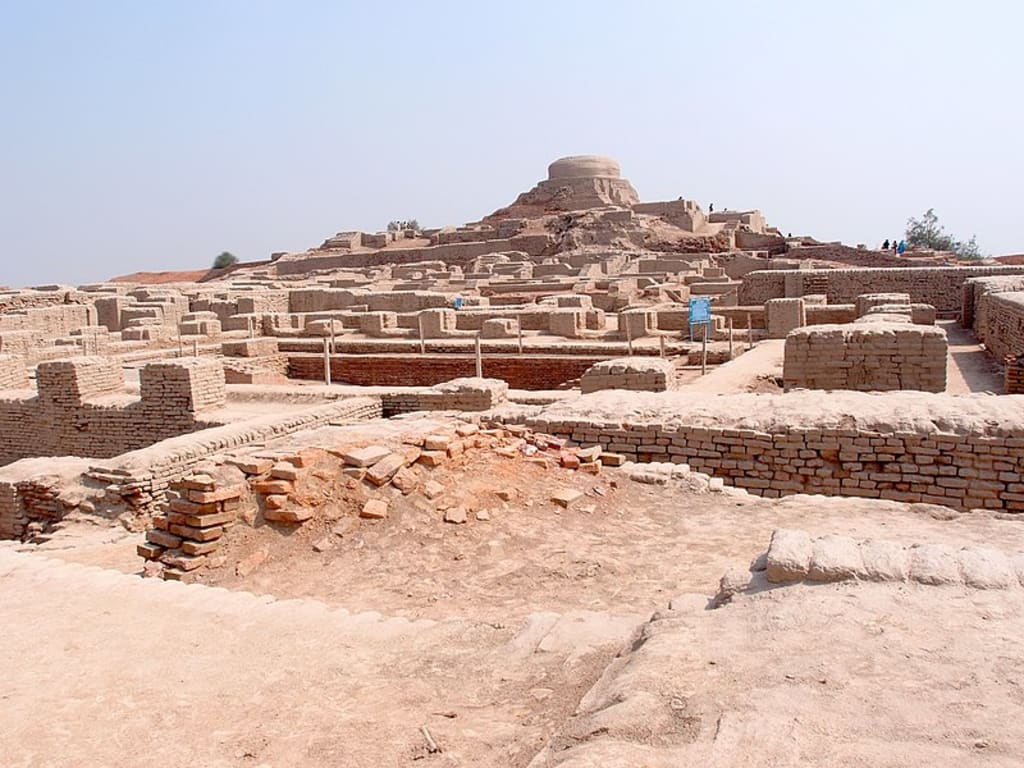
Mohenjo-Daro, one of the most significant archaeological sites in the world, stands as a testament to the advanced civilization that thrived in the ancient Indus Valley more than four millennia ago. Located in the Sindh province of modern-day Pakistan, Mohenjo-Daro was a major center of the Indus Valley Civilization, which existed from approximately 3300 BCE to 1300 BCE. The city's name, translating to "Mound of the Dead" in Sindhi, alludes to its discovery as a buried urban center. The history of Mohenjo-Daro is a fascinating journey into the achievements of an ancient culture that flourished in the valleys of the Indus River.
The discovery of Mohenjo-Daro dates back to the early 20th century when Sir John Marshall, the Director-General of the Archaeological Survey of India, led excavations that unearthed the ruins of this ancient city. The site's significance lies not only in its age but also in its well-preserved urban planning, architecture, and artifacts, shedding light on a sophisticated and organized society.
Mohenjo-Daro's urban planning is a marvel of ancient engineering. The city was laid out in a grid pattern, with streets intersecting at right angles, showcasing a level of city planning that was unparalleled in its time. The main streets were wide and well-laid, and the city boasted a complex drainage system with covered drains, a testament to the advanced engineering skills of its inhabitants.
The architecture of Mohenjo-Daro is characterized by standardized kiln-fired bricks, a material that contributed to the city's impressive uniformity. The houses were constructed with a focus on functionality and featured private wells, bathrooms, and courtyards. Notably, the Great Bath, a large public bathing area, stands as an iconic symbol of the city's advanced infrastructure, suggesting communal or ritualistic purposes.
Mohenjo-Daro was not merely an architectural marvel; it was also a thriving economic center. Archaeological findings indicate a well-organized trade network, with evidence of long-distance trade in materials such as ivory, gold, and lapis lazuli. The presence of a dockyard along the nearby Indus River suggests that the city had access to maritime trade routes, further emphasizing its economic significance.
The social organization of Mohenjo-Daro remains a subject of scholarly debate. The absence of monumental structures commonly associated with religious or political centers in other ancient civilizations has led to speculation about the nature of governance and religious practices in the Indus Valley Civilization. The city's social structure appears to have been egalitarian, with a lack of stark social hierarchies evident in the archaeological record.
One of the enduring mysteries of Mohenjo-Daro is the undeciphered script found on various artifacts. The Indus script, as it is known, has yet to be conclusively deciphered, adding an extra layer of intrigue to the city's history. The existence of a writing system suggests a complex society with its own means of communication, but the precise nature of this system remains elusive.
Around 1900 BCE, Mohenjo-Daro, along with other major cities of the Indus Valley Civilization, began to decline. The reasons for this decline are not fully understood and may include environmental factors, such as changes in the course of the Indus River, or social and economic challenges. The city was eventually abandoned, and its ruins remained buried for centuries, escaping the notice of subsequent civilizations until the 20th-century rediscovery.
Mohenjo-Daro's legacy extends beyond its physical remains. It has become a symbol of the achievements of the ancient Indus Valley Civilization, challenging preconceived notions about the capabilities of early human societies. The city's well-planned layout, advanced architecture, and evidence of a complex social and economic system have contributed significantly to our understanding of the past.
In conclusion, Mohenjo-Daro occupies a crucial place in the annals of human history. Its well-preserved ruins offer a glimpse into the achievements of an ancient civilization that was, in many ways, ahead of its time. The city's urban planning, architecture, economic significance, and the enigma of the undeciphered script collectively make Mohenjo-Daro a captivating subject of study for archaeologists, historians, and enthusiasts alike. As we continue to unravel the mysteries of this ancient city, Mohenjo-Daro remains an enduring symbol of the ingenuity and complexity of the human story.
About the Creator
Hashir Naseem
My 23 years of experience serve as a testament to my dedication to continuous improvement, ensuring that I remain a seasoned practitioner capable of meeting the dynamic demands of the ever-evolving worlds of copywriting, and article writing
Enjoyed the story? Support the Creator.
Subscribe for free to receive all their stories in your feed. You could also pledge your support or give them a one-off tip, letting them know you appreciate their work.






Comments (1)
I'm enjoying this article for its excellent writing and informative content.